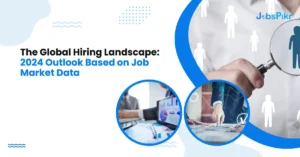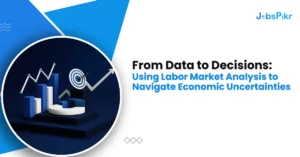Workforce management is not a single activity but encompasses multiple goals that the Human Resource team tries to meet. These goals can consist of a large number of objectives but can mainly be divided into 3 categories-
- Ensure hiring or upskilling goals are in sync with the requirements of different departments and resources are utilized in an optimized way.
- Increase satisfaction level among employees by banking on a feedback and reward mechanism while also looking at requirements for changes in the core work culture if required.
- Use data to keep track of market conditions related to hirings along with company-wide or department-specific personnel issues.
Under these 3 categories, talent management can involve added responsibilities such as-
- Career and succession planning of employees so that their goals are in line with the company objectives.
- Onboarding new employees at different levels may involve training, getting individuals accustomed to the work culture, and bringing them up to speed with the current pace of things.
- Innovation drives may include events like hackathons or building Athens to attract top talent from the best colleges.
So there’s no pre-defined “to-do” list for the talent management team. Instead, it must support the business based on the route it takes. A small example of this is – A grocery chain wanted to add home deliveries and self-pickups once COVID struck. Similarly, the company would bank on the Human Resources team to use Talent Intelligence to understand the labor market insights for their workforce planning.
What is Talent Intelligence?
Talent Intelligence is keeping track of multiple metrics related to company personnel at all times. It can also consist of competitor information. In this case, competitors do not refer to similar companies in the same industry. Instead, it means any company that hires for similar roles. For example, two companies may be hiring Python developers in large numbers whereas one of them may be in the hospitality sector and the other one in eCommerce.
Some important talent metrics that need to be tracked are–
- An idea of similar roles at competitors, the salaries and perks being offered, and the requirements being asked for.
- Market trends may include factors like higher demands and lower availability of certain roles, rising salaries for specific skill sets, top digital skills that companies are reskilling their employees in, and more.
- Performance expectations for different roles. This may include responsibilities on a day-to-day level, soft skills, leadership abilities, and team-building expertise.
- Time taken to fill vacancies once someone resigns, specific roles that are tougher to replace.
- Major reasons for attritions, along with any company-wise or department or team-specific trends. The average retention period of an employee of a specific department or team is also a good data point to track. The industry-specific attrition rate vs the company’s attrition rate needs to be monitored carefully.
Where can you get the data?
Once you have the data in hand, you can create dashboards, charts, alarms, interactive web pages, and more. But getting all the data and storing it in a database is the main challenge. Web data scraping is not easy as it requires deep expertise. There are two broad varieties of data that need to be captured–
-
Internal Data
When it comes to internal data, there’s no better way to capture information other than going to current employees. You can ask for feedback, create anonymous forms to collect information on certain points from time to time and you can have employees submit manager reviews in reverse performance checks. The sky is the limit and you can get as creative as you want when it comes to finding the right information from employees.
In terms of handling attrition, a great way to find the issues and nip them in the bud is to conduct extensive data-based exit interviews. Any major red flags or repetitions need to be flagged and immediately carried up to the leadership team to remove those issues. Existing employees can also be asked if they are facing the same issues. Having such cyclic processes early on can stop companies from falling victim to mass resignations when the job market and demand for experienced personnel go up.
-
External Data
Along with internal data points, a lot of external data can also be gathered and plugged into the talent intelligence workflow. This would involve data from your competitors, top companies in the industry, and job market studies.
Such information may be more difficult to gather as compared to internal data. There is no straight way to go about this. You can scrape data from websites like Glassdoor that capture the work environment, perks, and salaries offered for different roles in different companies. You can also scrape data related to specific job roles and locations such as Data Engineer in New York. Many websites inform you about the average salary offered for a role with x years of experience when you are creating a job post on their page. This information can also be captured and saved for later use.
How Does Talent Intelligence Software Help?
Workforce management can be done with the help of talent intelligence software. Explore and understand in-demand job roles & emerging skills in your industry with intuitive dashboards across the globe. This will help you in the talent acquisition strategy by acquiring the talent your competitors are hiring for. But there’s also a human touch without which your talent management program would not be a success.
When it comes to workforce management, staying one step ahead of your competitors is a must. Data, automation, and talent intelligence software do help in analyzing the current labor market trends to improve business agility and build your future-proof talent strategy. Talent Intelligence will help you create short and long-term workforce sourcing strategies for any location by identifying key points like salary, top job roles, and emerging skills. By understanding how these skills and roles are evolving in your industry, you will be able to make quick and smart decisions.




